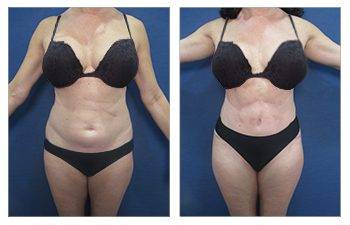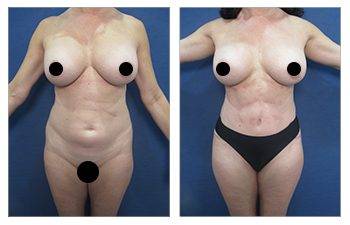


Introduction: What is carboxypneumodissection?
Carboxypneumodissection has been developed by Dr. Guillermo Blugerman from Argentina who is considered a true master of cosmetic surgery. Carboxypneumodissection describes the ability to improve vascularity and oxygen delivery to tissues that might be compromised. Protection of vascular compromise occurs by two mechanisms that include infiltration of Carbon dioxide (CO2) and subsequent release of Oxygen (O2) from red blood cells into the soft tissues. Typical volumes of infiltration range from 200 to 300 cc of CO2 in localized areas, 200 to 500 cc into each breast mound, or even 500 to 700 cc into each buttock cheek in preparation for fat grafting.
How does carboxypneumodissection work?
Carboxypneumodissection describes the direct injection of Carbon dioxide using needle cannulas into the subcutaneous tissues. This process will expand the soft tissues by creating subcutaneous emphysema. The CO2 acts like a vasodilator of small vessels, that include veins and lymphatic channels, in the skin. This vasodilating action has the net effect of increasing blood flow through the tissues.
The second effect of Carboxypneumodissection is the dumping of Oxygen from red blood cells. Red blood cells have a greater affinity for CO2 than O2. This dumping effect of red blood cells is termed the Bohr’s effect and results in hyperproliferation of soft tissues with oxygen. In exchange, the infiltrated CO2 is taken up by the red blood cells to be exhaled by the lungs. Hyperbaric oxygen therapy provides the same benefit as carboxypneumodissection.
The Benefits of Carboxypneumodissection
The benefits of carboxypneumodissection are several and include improving vascularity and oxygenation to tissues that are compromised in vascularity. This benefit may be very helpful in the setting of vascular compromise following liposuction. Another benefit of carboxypneumodissection involves the setting of fat grafting where fat cells are transplanted and don’t have an immediate vascular network to support them. Vasodilation and oxygen delivery seem to improve fat graft viability, especially in the setting of autologous breast augmentation where results are compromised. Finally, carboxypneumodissection has been observed to help discoloration of tissues. This can occur following high definition liposuction where moderate soft tissue scarring is observed or even in the setting of free silicone injections in the buttock cheeks that are now considered illegal.
Conclusion: What is Carboxypneumodissection
In summary, carboxypneumodissection describes the process of infiltrating the soft tissues with carbon dioxide gas to encourage improved oxygenation. Several benefits have been described including improved oxygenation. Further research is needed to verify suggested and observed clinical uses
